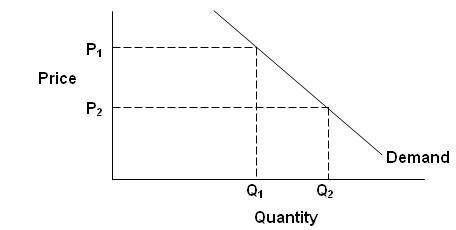Analyzing the Price- Requirement Relationship
Each price the company might charge shall lead to a distinct level of demand. The connection among the price charged and the resulting demand stage is shown in the demand curve in Figure. The demand curve shows the total of units the marketplace will buy in a given time at distinct prices that may be charged. In the simple case, requirement and price are inversely related; that is, the higher the price, the smaller the requirement. Thus, the company would sell less if it raised its price from P1 to P2. In small, customers with limited budgets possibly shall buy less of something .if its price is also high.

In the matter of status goods, the requirement curve sometimes slopes up. Customers think that higher requirement mean more quality. Most companies try to measure their demand curves by estimating demand at different prices. Such kind of type of market makes a distinction. In a monopoly, the requirement curve shows the whole marketplace requires resulting from different prices. If the company have to faces competition, its requirement at different prices will depend on whether competitors' prices stay constant or change with the company's own prices. For measuring the price-demand relationship, the market researcher must not permit other factors affecting demand to vary. For instance, if any of company increases its advertising at the similar time that it lowers its product cost, we would not know how much of the increased demand was due to the lower prices and how much was due to the increased advertising. Economists indicate the impact of nonprice factors on demand by shifts in the demand curve instead than movements along it.